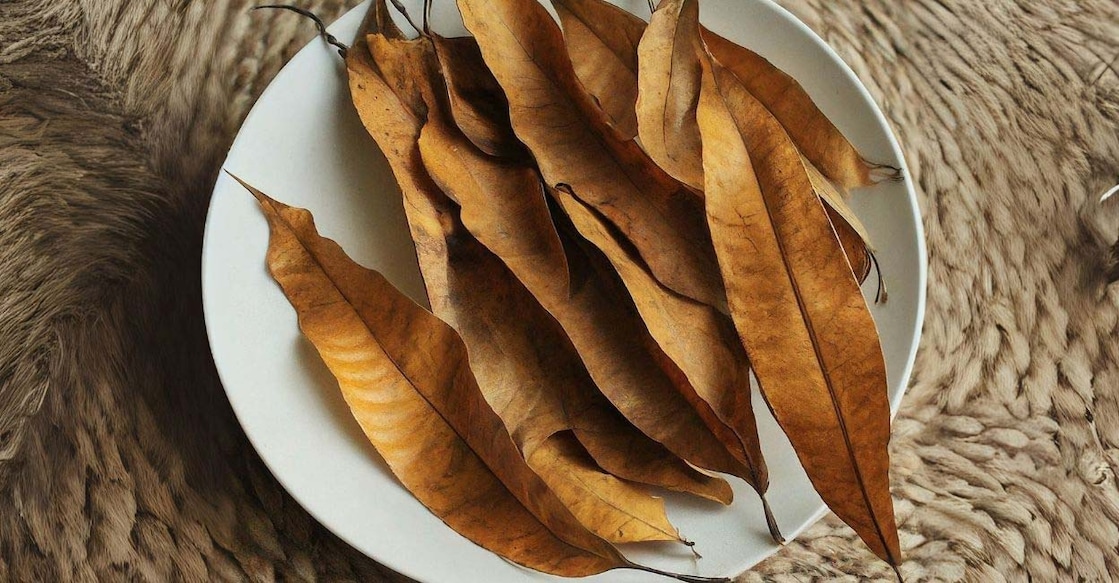UK store sells dried mango leaves at ₹500 a packet—and desis can’t leaf it

Mail This Article
An Instagram reel recently sent Indian netizens into a full-blown collective giggle. The reason? A UK supermarket calmly selling sun-dried mango, jackfruit, and guava leaves in tidy little plastic bags—for £4.49 a pop (approx ₹500).
Yes. Leaves. The same ones clogging gutters during monsoon and crunching under your flip-flops on a sunny afternoon. Suddenly, they’re haute botanical exports. Naturally, the desi internet went wild. “Come to my backyard,” one commenter wrote. “I’ll give you two kilos free, plus tea.”
Now, for most Indians, this is the kind of thing you sweep off your backyard or curse when it falls into your car windshield wiper. Mango leaves? Those things your grandmother once made you hang at the doorway during festivals, or worse, collect from the garden during a storm. Jackfruit leaves? Mostly used to make makeshift plates or… just left alone. Guava leaves? You probably never gave them a second thought—until now.
But before we all start side hustling as leaf exporters, let’s clear the air: these aren’t for chewing or steeping into trendy detox drinks (yet). They’re meant for aquariums.
Yes, you read that right. Fish tanks. Apparently, dried leaves—especially ones from trees like mango and guava—are loved by the global aquarist community. When added to freshwater tanks, these leaves slowly release tannins that help lower the water’s pH, creating a "blackwater" environment. This mimics the natural habitat of many tropical fish, making them happier, healthier, and possibly more philosophical (we're speculating on the last one). The leaves also support biofilm growth, a kind of buffet for baby shrimp and certain fish species.
So while you were cursing your mango tree for shedding too much in summer, someone across the world was lovingly plucking those same leaves out of a £4.49 packet and gently placing them in a designer glass tank.
But wait… can you eat them?
Absolutely! Dried mango leaves are not just for aquarium aesthetics. Fresh tender mango leaves are sometimes used in tribal or coastal recipes. But even the mature, sun-dried ones—the kind falling in crunchy layers in every tropical backyard—have their uses. They're:
- Burned to smoke and flavour foods,
- Used in home remedies for colds and coughs, and
- Ground into a powder and consumed as a health supplement.
That last one might surprise you. In Ayurveda and folk medicine, dried mango leaf powder is believed to help with blood sugar regulation, digestion, and inflammation. Some people take it mixed with warm water on an empty stomach. Others add it to teas or homemade herbal capsules. It’s not exactly tasty—but it’s got a fan following among the wellness-minded.
Here's how to make it at home:
DIY mango leaf powder (the old-school superfood)
You’ll need:
Mature mango leaves (sun-dried until crisp)
A clean grinder
An airtight jar
Steps:
Collect mango leaves that are fully dried but not mouldy.
Lightly rinse if dusty, and dry them again in the sun or a low oven.
Grind into a fine powder.
Store in a clean, dry, airtight container.
How to use it:
– Mix ½ tsp in warm water and drink before meals.
– Add to herbal tea blends.
– Sprinkle a pinch into smoothies (mask the bitterness with fruit).
(Disclaimer: Not all remedies suit everyone. If you have medical conditions—especially diabetes—check with a doctor before adding it to your routine.)
And while we are at it, try out this refreshing mango leaves summer cooler:

